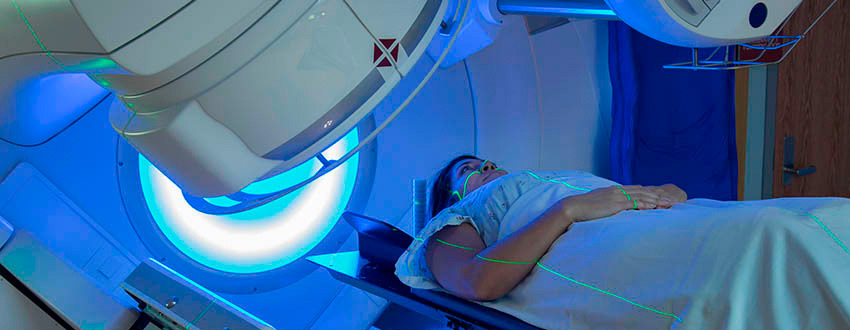Research shows side effects of radiation therapy are reduced when computer optimizes treatment
Media contact: Mary Clare Fischer, 734-764-2220 | Patients may contact Cancer AnswerLine™, 800-865-1125
A multi-center study found that breast cancer patients experienced less pain and skin irritation when a more complex form of treatment planning was used for radiation

When a computer optimized the treatment plan for radiation therapy that was broken into multiple segments, known as inverse-planned, intensity-modulated radiotherapy, or IMRT, breast cancer patients were in less pain and experienced less skin irritation than when CT scans were used to deliver three-dimensional conformal radiation therapy, also know as 3DCRT.
That’s according to findings by the Michigan Radiation Oncology Quality Consortium, a network of radiation treatment centers across the state that focuses on quality improvement.
Inverse planning allows for more complex treatment plans, with pixel-by-pixel variation, but has historically been more burdensome. These findings suggest, though, that the technique may help lessen the side effects of radiation therapy when used with IMRT.
However, whether to use more complex forms of IMRT for breast cancer patients involves weighing the expected benefit against costs, patient preferences, societal values and whether these methods end up giving low doses of radiation to regions like the other breast, the lung or the heart — an area that requires more research.
"This analysis from the Michigan Radiation Oncology Quality Consortium shows that radiation techniques that can limit doses to the skin of the breast can lead to less patient side effects,” said Lori Pierce, M.D., professor of radiation oncology at the University of Michigan Medical School and the senior author of the study. “While use of IMRT may be one way to meet these constraints, we hope to better understand how other treatment approaches can be adapted to result in more uniform dose delivery and comparable side effects following breast irradiation."
Another aspect to consider is the use of hypofractionation, which involves giving larger doses of radiation at a time and therefore reduces the number of treatments patients receive; this option resulted in fewer side effects during the study as well.
“Creative efforts to promote appropriate use of moderate hypofractionation remain most essential, particularly given early observations of slow uptake of that approach,” said Reshma Jagsi, M.D., D.Phil., the deputy chair of radiation oncology at Michigan Medicine and the lead author of the study.
Ultimately, this study adds nuance to the discussion of how to improve the quality of life for breast cancer patients receiving radiation, she adds.
“The acute side effects of radiation can cause significant distress for patients,” Jagsi said. “There may even be long-term consequences for those who have had particularly severe acute toxicity during treatment. It is important that radiation oncologists do everything we can to make treatment tolerable for our patients. Our goal is not only to contribute to the cure of cancer but also to optimize our patients’ ability to function throughout their treatment journey and beyond.”
Additional authors include Kent A. Griffith, Margaret Grubb, James A. Hayman, Jean M. Moran, Martha M. Matuszak, and Robin Marsh of Michigan Medicine; Eyad Abu-Isa of Michigan Medicine and Providence Ascension; Joshua T. Dilworth and Danielle Lack of Beaumont Health; Michael M. Dominello of Karmanos Center Center at Wayne State University; David Heimburger of Munson Healthcare; Eleanor M. Walker of Henry Ford Health System; and Frank Vicini of GenesisCare.
Funding was provided by Blue Cross Blue Shield of Michigan and the Blue Care Network as part of the BCBSM Value Partnerships program.
Paper cited: “Comparative Effectiveness Analysis of 3D-Conformal Radiotherapy versus Intensity Modulated Radiotherapy (IMRT) in a Prospective Multicenter Cohort of Breast Cancer Patients,” International Journal of Radiation Oncology - Biology - Physics. DOI: 10.1016/j.ijrobp.2021.09.053
